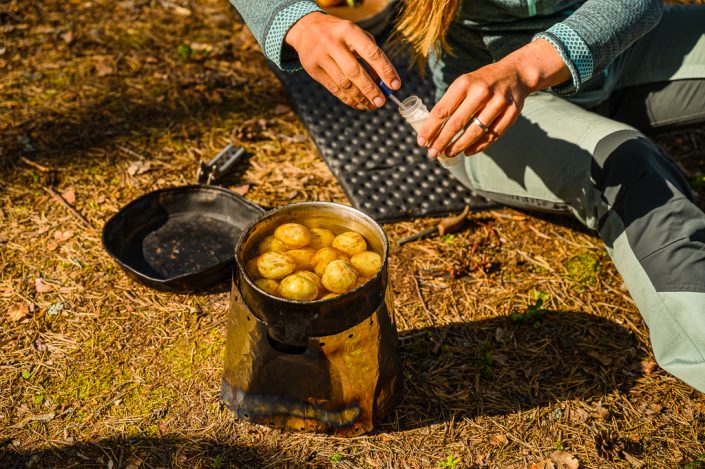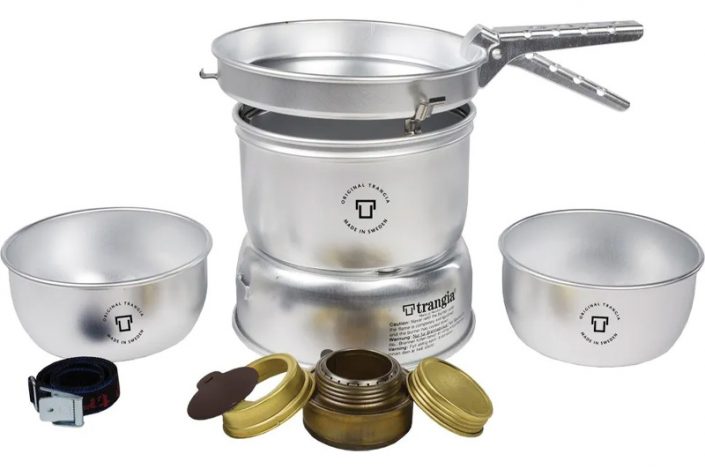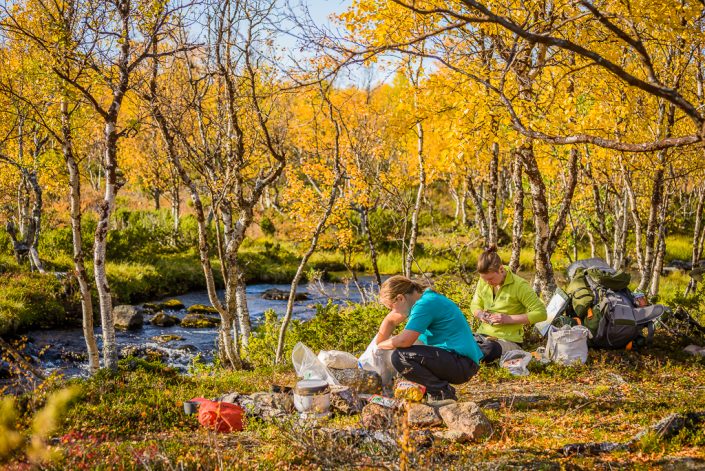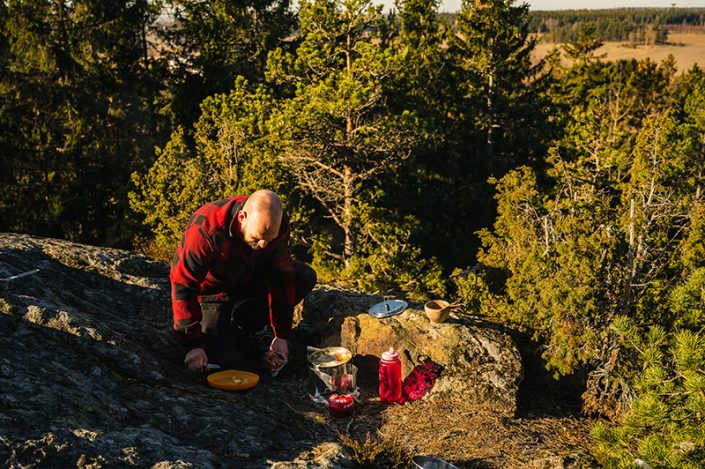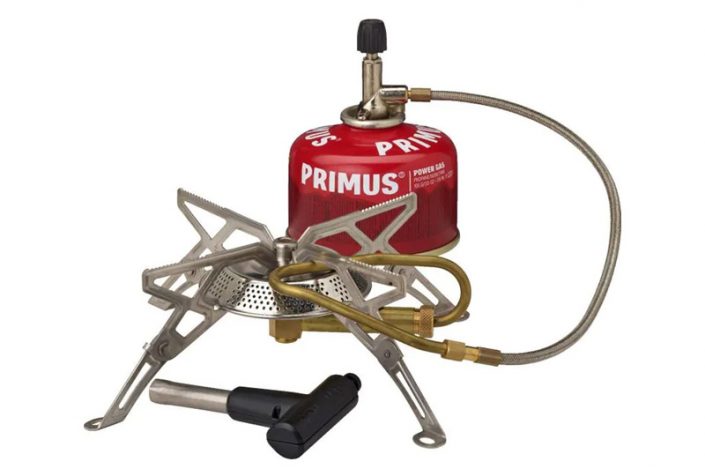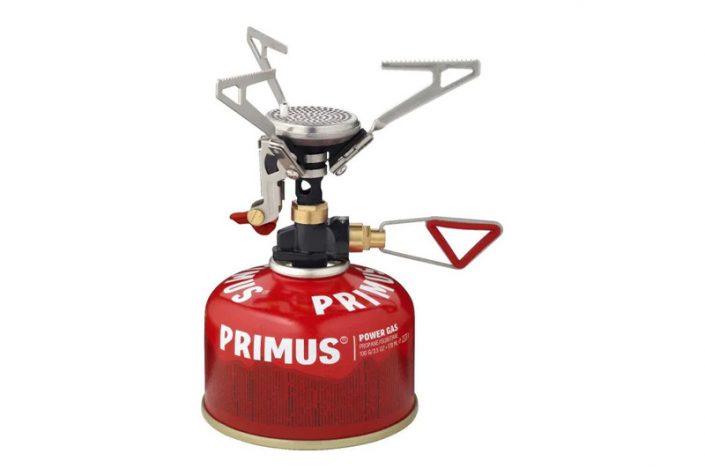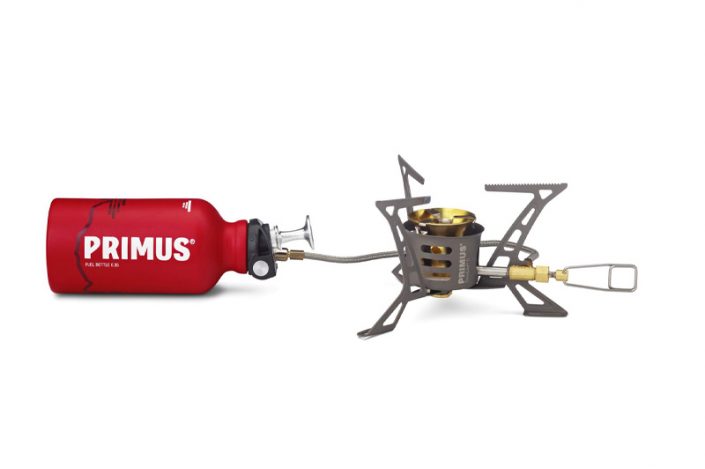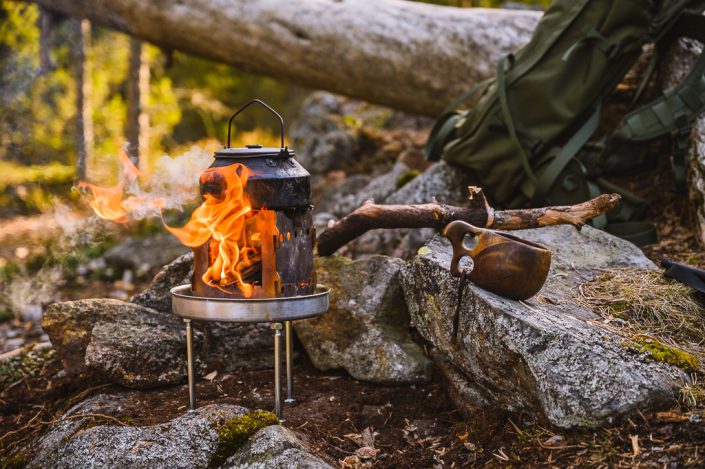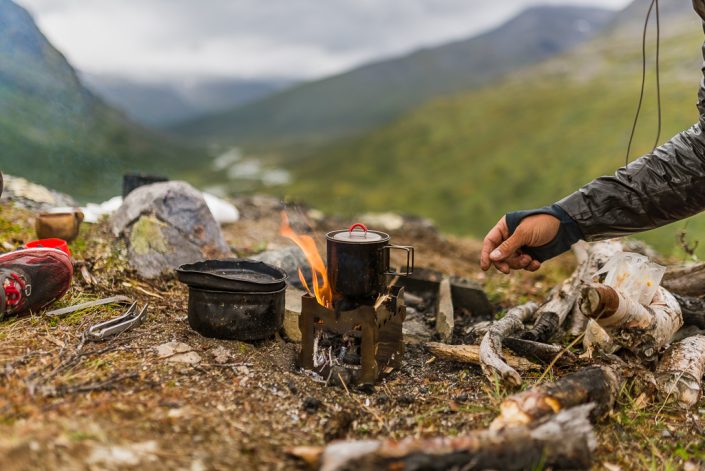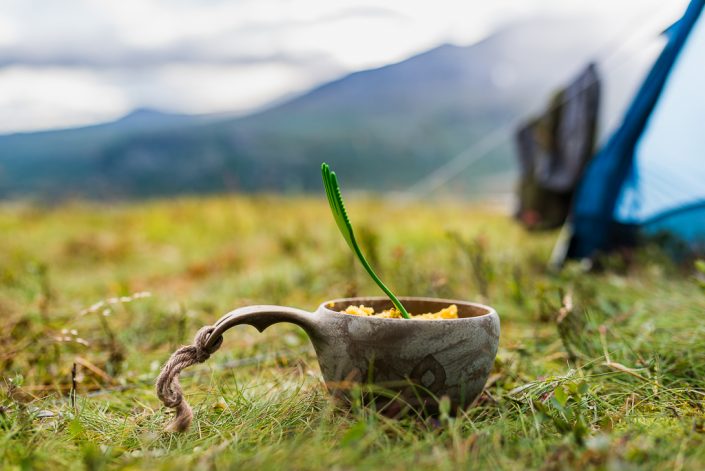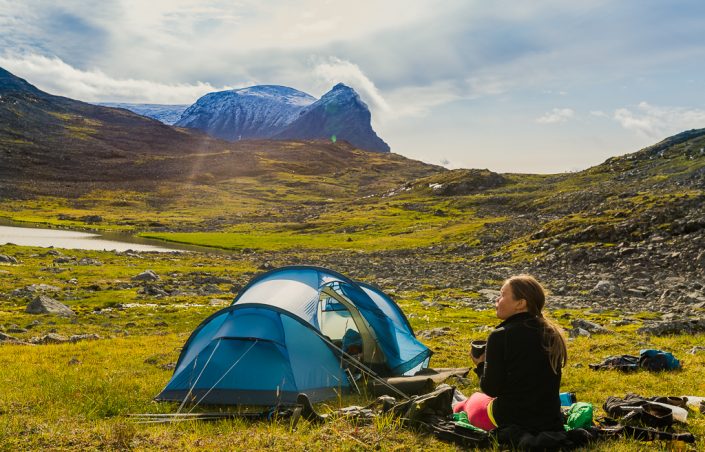

Choosing a camping stove — different stoves compared
In this blog post we will go over different types of camping stoves and will tell you how they differ from one another. With these tips you will be able to successfully choose your first camping stove or upgrade your old one.
You can cook pretty much the same food you cook at home with a proper camping stove. Usually with just a little twist.
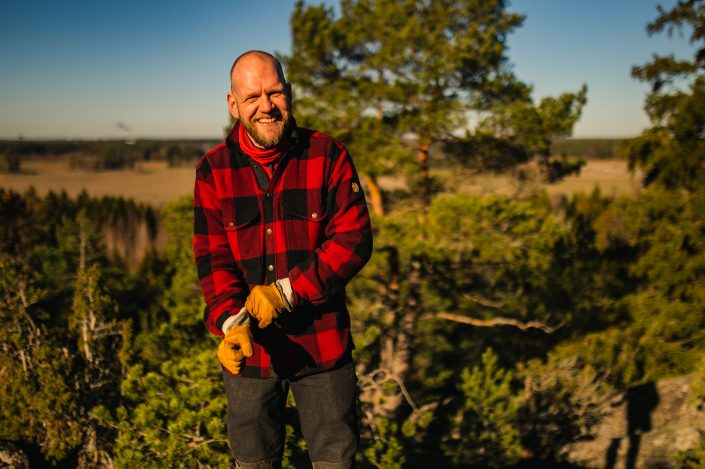 Mikko works as an outdoor specialist at our Turku Hansa shop. Mikko has almost 20 years of experience with helping hikers, and we’re certain that he is a familiar face to many of our customers. Mikko also acts as one of the outdoor experts for our Outdoor Guides.
Mikko works as an outdoor specialist at our Turku Hansa shop. Mikko has almost 20 years of experience with helping hikers, and we’re certain that he is a familiar face to many of our customers. Mikko also acts as one of the outdoor experts for our Outdoor Guides.
There is a mind-boggling amount of different camping stoves available on the market. Choosing the right stove for your needs can be tricky, so we wrote a handy guide to show you the various kinds of camping stoves available and talk about their differences.
Camping stoves can be roughly divided into four categories based on their fuel type: gas, alcohol, gasoline, and wood. All of the categories mentioned above have their good and bad sides.
An alcohol stove is simple and easy to use
You can often hear the word Trangia mentioned casually in conversation, usually meaning the legendary Trangia alcohol stove that came with a handy set of pots. Alcohol stoves have indeed long been the most widely used type of camping stove in Finland.
The stove itself is very simple, and does not contain complicated, easily breakable parts. The stove basically consists of a cup for fuel, methylated spirits, which is then lit, for instance with a match. The cup has an adjustable lid, that can be used to adjust the size of the flame.
The Trangia alcohol stove can nowadays be had with different sized pots, various frying pans, and different coated pots. The package usually contains two pots, one frying pan / pot lid, a sturdy wind shield, the stove, packing bag, and a handy aluminum grabber for moving hot pots and pans.
Alcohol stoves, the good:
- Simple construction, hardly any breaking parts
- Easy to use
- Sturdy and safe
- Good when cooking for a large group
- An inexpensive purchase
Alcohol stoves, the bad:
- Fuel is heavy, canisters might leak
- Not the most efficient of stoves
- A large package for hiking
A gas stove is efficient and easy to use
Gas stoves have already overtaken alcohol stoves with their popularity, even though alcohol stoves still have their loyal users. Trangia also sells a range of gas stoves, where the alcohol burner has been replaced with a gas stove. There are three kinds of gas stoves: a simple burner that attaches directly to the gas cylinder, a separate burner with a stand that attaches to the gas cylinder with a hose, and a stove with its own wind shield and stand, able to boil water quickly.
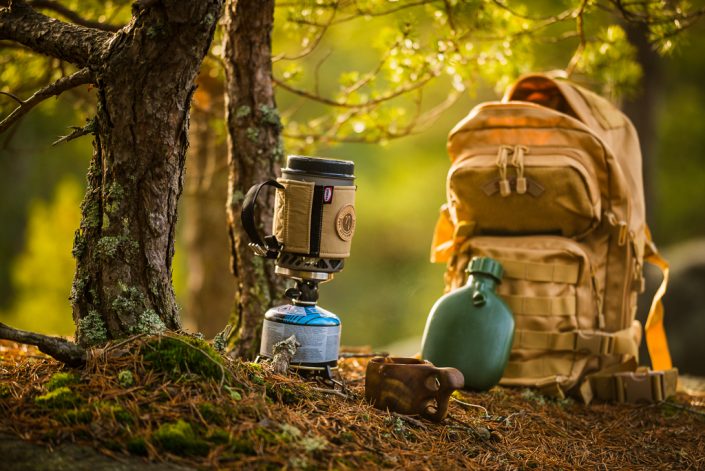 Primus Lite gas stove is good for boiling water fast. The container attaches to the stove itself, and is not very susceptible to wind and is quick to boil water thanks to its construction. The stove comes with screw-on attachments allowing the use of ordinary pots.
Primus Lite gas stove is good for boiling water fast. The container attaches to the stove itself, and is not very susceptible to wind and is quick to boil water thanks to its construction. The stove comes with screw-on attachments allowing the use of ordinary pots.
Gas stoves also come with pressure regulators. Pressure regulators help the burner burn with a flame that is steadier than that of an unregulated stove, regardless of the pressure and temperature of the surrounding atmosphere. The pressure of the gas bottle varies with its volume. A pressure regulated stove is more efficient at using gas, and basically allows you to boil more water with the same amount of gas than when using an unregulated gas stove. You can read more about pressure regulators here.
A gas stove consists of a burner and a gas cylinder. Gas cylinders come in three different sizes: 100 g, 230 g and 450 g. The gas also comes in winter grade, which burns better in temperatures below freezing. The burner itself, or the stove, is attached by either screwing it directly to the top of the gas cylinder or, in some models, to the hose that connects the bottle and the burner.
Primus Gravity III – a gas stove with a burner on a sturdy stand that has a separate hose attachment for a gas cylinder.
The simplest stove is one that has a burner that attaches directly to the gas cylinder, like this Primus Microntrail Piezo.
A gas stove is very simple to use. You need to find a flat surface to set the stove on. If the gas stove is of a type that attaches directly to the gas cylinder, a stand that in turn attaches to the gas bottle can be used for a surer placement. Open the gas valve and light the flame with either the in-built Piezo-lighter (not available on all models) or with a match.
Gas stoves, the good:
- Efficient and faster than an alcohol stove
- Easy to use
- Relatively cheap (more expensive models available)
- Packs into a small space, light
Gas stoves, the bad:
- Don’t work well in colder temperatures
- The burner contains parts that can break or clog
- Can be a little wobbly
- Some models might have a problem with adjusting the flame to a size that allows for simmering (food might burn to the bottom of the pan).
A petrol stove is the most efficient, but its use requires some learning
Petrol and multifuel stoves are very efficient and powerful, and are especially well suited for winter hiking. The fuel types suitable for use in multifuel stoves are (requires changing the nozzle, see instructions): gas, petrol, diesel, kerosene, fuel oil, or lamp oil. It is, however, recommended to use the cleanest available type of petrol, such as Primus Power Fuel, so that impurities in the fuel won’t cause clogging in the system.
A petrol camping stove consists of the burner, the fuel pump, and the fuel bottle. The bottle is attached to the stove with a hose. The stove itself has legs of its own, but a cooking box is usually used during winter hikes, to which the stove is securely attached. The box will also prevent the snow from melting around the stove, thus toppling it. If a fire breaks out, the box can be closed and tossed into a snowdrift.
Multifuel camping stove Primus OmniLite Ti and Bottle, package contains: Stove,
fuel pump, fuel bottle, interchangeable nozzles, tools for cleaning and changing the nozzles as well as disassembling the stove, a carrying bag, and a set of instructions you really should read.
A petrol camping stove is a lot more complicated and dangerous to use than an alcohol or gas stove. You should learn how to use the stove properly before going hiking with it, to avoid accidents. Various petrol stoves also have differing pre-heating and operating procedures.
The biggest difference between a petrol stove and a gas stove is that the stove has to be pre-heated, so that the liquid fuel is vaporized before it reaches the burner.
MSR multifuel camping stoves:
Primus multifuel camping stoves:
Petrol and multifuel camping stoves, the good:
- A very powerful stove
- Works great on winter hikes, even in freezing temperatures
- Usually a very well adjustable flame
- Fuel easy to find when traveling abroad
Petrol and multifuel camping stoves, the bad:
- Expensive to purchase
- Requires learning
- Often a heavier set than a gas stove
Might be loud, like Primus Ti (there is a solution to this, however: a silencer)
A wood stove makes even just boiling water into an atmospheric experience
Wood stoves started becoming mainstream a few years ago, and quickly gained popularity as bushcrafting-stoves. In many countries they were at first often classified as stoves, and could be used even when open flames were forbidden. But nowadays a wood stove is in most countries classified as an open flame. In practice this means that the stove can’t be used when a forest or brush fire warning is in force, nor can it be used without a permission from the land owner.
Note! Open flame is expressly forbidden in all areas when a forest or brush fire warning is in force! That includes private land!
A simple wood stove is a receptacle with air holes, in which twigs, small bits of wood, or pellets, are burned. A wood stove is a good choice at fire sites, when you don’t have to build a campfire. Just chop a piece of firewood into small bits, and you can already easily cook your food and boil the water with it.
The wood camping stove is also a viable alternative when hiking in areas where making an open fire is permitted. It allows you to make food quickly and efficiently, and is quicker to put out than an open fire. The wood stove also doesn’t use much fuel, so a few twigs and branches go a long way.
Wood camping stove, the good:
- Fuel can be found almost anywhere, for free
- Using the stove is atmospheric
- Wood stoves are cheap
Wood camping stove, the bad:
- Limited by open flame regulation
- Require some learning
- Not necessarily the fastest stove in the world
Camping stoves: A summary
To generalize, it is possible to say that gas and alcohol stoves are a good choice for beginners. Gas stoves are more efficient and can be stowed into a smaller space (depending on pots, pans, etc.). Alcohol stoves are often sturdier, but require a bit of mucking about with the liquid fuel.
Petrol and multifuel camping stoves are the most efficient, but they are expensive and require more expertise. However they can’t be beaten during harsh winter conditions.
A wood camping stove is the most atmospheric way of making food on a flame, but due to being classified as an open flame its use is strictly regulated.
Staying safe
Even though using camping stoves is generally extremely safe, accidents can still happen. For instance gas and alcohol stoves can flare up badly when tipped over, so you really have to take care of fire safety. Cooking inside a tent is usually forbidden by the manufacturer. Most of tent fabrics are flammable, and might catch fire. You should also be careful of forest fires, especially during brush or forest fire warnings and when the ground is dry.
Another frequently asked question is how much gas is usually used up during a hike. This depends a lot on the prevailing conditions, such as air temperature and wind speed, the stove, and what is cooked on it. Most people calculate the consumption to be about 50g per person per day during the summer season, you can also use 1.5 as a multiplier if it’s two people hiking together. This should be enough to brew the morning coffee, make lunch, dinner, and evening snacks with some hot drinks.
Read more:
Some good thoughts on fuel consumption can be found here.
Posted: 12.8.2020Modified: 16.1.2025
